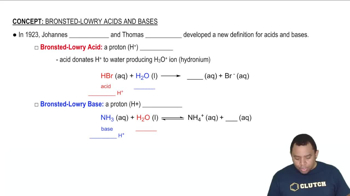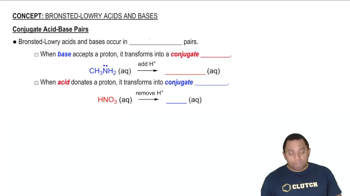Textbook Question
Identify the stronger acid in each of the following pairs.Explain your reasoning.(b) H3PO4 or H3AsO4
1
views
 Verified step by step guidance
Verified step by step guidance



Identify the stronger base in each of the following pairs.
Explain your reasoning.
(a) ClO2- or ClO3-
(b) HSO4- or HSeO4-
Identify the stronger base in each of the following pairs.
Explain your reasoning.
(c) HS- or OH-
Calculate the H3O+ concentration to the correct number of significant figures for solutions with the following pH values. (d) 14.25
Calculate the H3O+ concentration to the correct number of significant figures for solutions with the following pH values. (e) -1.0